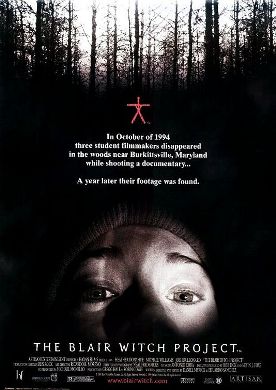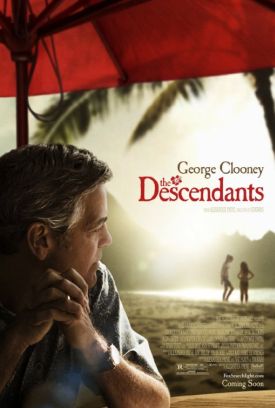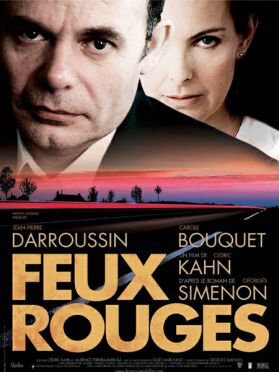Blair Witch Project, The
The Blair Witch Project directed by the first-time filmmakers Eduardo Sanchez and David Myrick, is a curious and partly successful attempt to make fiction look as much like documentary as possible by giving us what purports to be raw documentary footage from three young kids who were making a film about witches in the mountains of Western Maryland when they “disappeared.” Unprepared audiences might almost believe that this is, as it purports to be, the film they shot while lost in the woods, looking for evidence of witches, since its drama seems to be more or less incidental and unintended. Moreover, there are the usual cinéma verité touches of the jerky moving camera and the cluttered soundtrack, together with convincingly inarticulate dialogue, to convince us that these three youths (Heather Donahue, Michael Williams and Joshua Leonard) are as they purport to be lost in the woods and terrified for their lives.
It is only (and fatally for the film’s desired effect) near the climax that we begin to realize that kids who were really so frightened as these are supposed to be would at the same time have the presence of mind to catch it all on film. Apart from that, the thing is frighteningly believable—at least if you believe or can be briefly persuaded to believe in witches. From this point of view, it is interesting that the authors have chose to make their ingenious assault on the problem of fictional overload not only with a newly invigorated authenticity but also by reverting to an older fictional convention—that of witches as embodiments of untamed and deadly nature. That was what they were in the middle ages, when people actually believed in them.
Since then, having passed through a campy phase in which they appeared as black-robed, pointy-hatted, broom-riding hags, they have become comfortable familiars of the TV generations from Darren’s cute, nose-twitching but mostly obedient wife Samantha on “Bewitched” to “Sabrina the Teenage Witch.” True, they also had a brief vogue as icons of the feminist defiance of patriarchy but since then they seem to have become—like feminism itself outside the neo-Marxist, masturbatory fantasies of academia—more or less completely domesticated. Now even our wonderful all-volunteer armed forces thoughtfully provide “Wiccan” chaplains for vaguely animist but wholesomely non-sexist troops of both sexes.
How bold, then of Messrs Sanchez and Myrick to bring back witchery in all its old-fashioned, murderous, child-molesting, eviscerating nastiness. The best moment of the film comes when Heather insists to the two boys, who are weaker and more frightened than she, that things can’t really be as bad as they seem. “It’s very hard to get lost in America these days,” she says, “and it’s even harder to stay lost. So we have that going for us.” Later, when one of the others suggests that they might just keep walking around, lost forever, Heather says this is “not possible, because this is America and we have destroyed most of our natural resources.” Some unreconstructed anti-environmentalist deep inside even the most progressive of us whispers that this merely fashionable sentiment is the sheerest hubris and must call down upon the naïve children’s heads a terrible vengeance.
It is this expectation, I think, more than the increasingly cumbersome pretense of documentary authenticity which produces a genuine frisson of terror in even the most jaded audience. It’s true that the authentic sounding dialogue, with its casual obscenities, its pop cultural references and its complete inadequacy to the occasion contributes to the effect. It’s like watching a fluffy little bunny rabbit mesmerized by the python which is about to swallow it. These kids, raised in luxury and comfort in some American suburb, not only have no skill with map and compass but they also have no vocabulary for dealing with evil, death and disaster. It is the latter ignorance which is somehow the more frightening, the more real-looking.
But the more important and difficult task that the film undertakes is to make pure evil believable and therefore frightening again by reversion to an idea of it which is so traditional that it has become innovative. And it almost brings it off. The trouble with what the filmmakers (or at any rate their press material) refer to as “first person” or “method” filmmaking is that it is as ephemeral as the news which it is meant to resemble and, for all its documentary style and the elaborate back-story chronicled on its website (www.blairwitch.com) can only produce its effect one time. The evil that lurks in nature undisciplined by the hand of man will always have the power to scare us to death.
Discover more from James Bowman
Subscribe to get the latest posts to your email.







